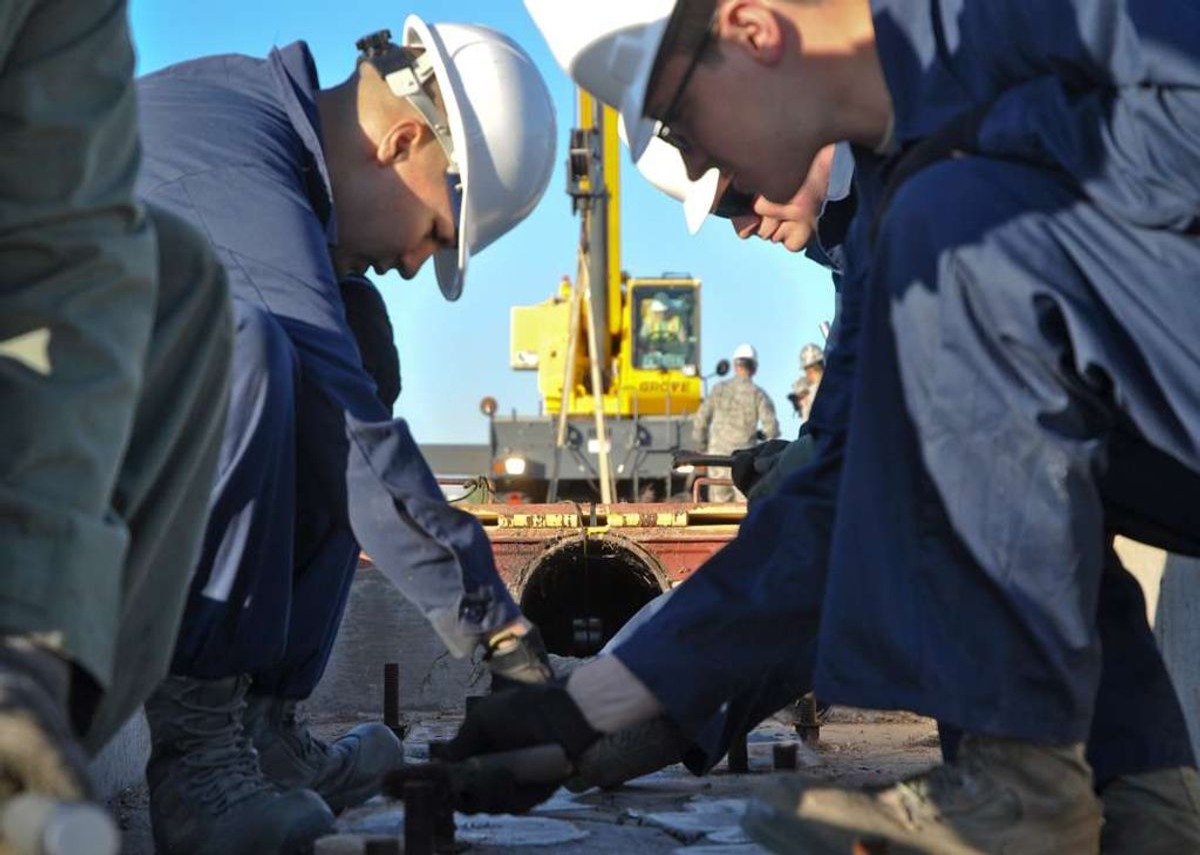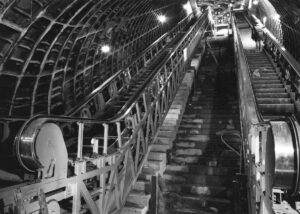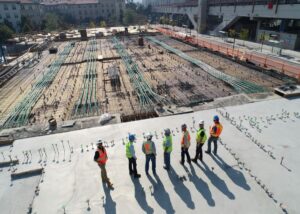The transformative impact of artificial intelligence AI in civil engineering is ushering in a new era marked by significant advancements in design, management, and analysis. As AI revolutionizes traditional processes, it enables generative design, optimizes project management, and enhances engineering analysis with sophisticated simulations. This synergy between human engineers and AI is not about replacement; it’s about augmenting human capabilities to foster innovative solutions and improve efficiency across all stages of infrastructure development. AI stands as an essential tool for evolving and sustaining the infrastructures of the future.
Table of Contents
Key Takeaways
- AI is revolutionizing civil engineering with generative design, allowing for the creation of previously impossible structures and enhancing aesthetics with facial analysis.
- AI-powered project management tools predict project delays, identify safety hazards, and streamline communication, leading to more efficient and safer work environments.
- Advanced AI simulations and modeling techniques are pushing the boundaries of traditional civil engineering analysis, offering more precise and comprehensive decision-making capabilities.
- The integration of AI in civil rights and infrastructure emphasizes inclusive design and advocacy for vulnerable communities, promoting equitable solutions in civil governance.
- AI applications in field operations, such as visual inspections and asset management, are transforming efficiency, accuracy, and safety, particularly in sectors like aviation and energy.
Revolutionizing Design with AI: The Future of Civil Engineering

Generative Design with AI in Civil Engineering: Crafting the Impossible
Imagine a world where the boundaries of engineering are constantly being pushed by the power of AI. Generative AI is at the forefront of this revolution, enabling civil engineers to craft designs that were once deemed impossible. With generative design, engineers can explore a vast landscape of design possibilities, optimizing for materials, cost, and environmental impact all at once.
- Generative AI applications range from creating presentation templates to manufacturing 3D objects.
- These tools can predict a wide array of tasks, generating content that would typically require human expertise.
- Digital twins, a concept evolving from digital models, are now enhanced by AI to provide real-time insights and optimizations.
Generative AI holds immense potential for engineering, from design assistants that can formulate design approaches to new problems or provide real-time project adjustments.
The implications are profound, as generative AI not only accelerates the design process but also introduces a level of precision and innovation that was previously unattainable. Civil engineers are now equipped to tackle challenges with a new set of tools that redefine the creative process.
Incorporating Facial Analysis in Structural Aesthetics
The integration of AI in civil engineering is not just about crunching numbers and managing logistics; it’s also about bringing a touch of humanity to the structures we build. Facial analysis is stepping out of the shadows of orthodontics and into the limelight of structural design. By analyzing human facial features, architects and engineers can create spaces that resonate on a deeply personal level, crafting environments that are not only functional but also emotionally engaging.
Facial analysis isn’t just about aesthetics; it’s a tool for empathy, allowing us to design with the human experience at the forefront. Imagine walking into a building that mirrors the harmony of the human form, where every curve and contour has been considered with the same care as a sculptor gives to their masterpiece.
- Understanding the emotional impact of design
- Incorporating human elements into structural aesthetics
- Enhancing user experience through personalized design
In this new era, buildings are more than just shelters; they are reflections of our collective humanity, shaped by the insights AI provides into our most fundamental expressions.
As we look to the future, the construction industry is poised to embrace these innovations. Top AI software like ClickUp and AVEVA Insight are revolutionizing project management, design optimization, and safety, setting the stage for a new chapter in civil engineering where beauty and functionality converge seamlessly.
AI as a Collaborative Partner in Engineering Creativity
The fusion of AI with civil engineering is not just about crunching numbers faster; it’s about unlocking a new realm of creative possibilities. Imagine a workspace where AI doesn’t replace the engineer but rather serves as a dynamic brainstorming buddy, offering insights that might take years of trial and error to uncover. This partnership is about leveraging the collaborative power of AI to enhance human ingenuity.
- AI can suggest unconventional design solutions that push the envelope of innovation.
- It can analyze vast amounts of data to identify patterns and opportunities invisible to the human eye.
- By simulating countless scenarios, AI helps in refining designs to achieve optimal performance and sustainability.
The goal is not to create AI that thinks like an engineer, but to foster an environment where engineers can think alongside AI.
The potential for AI to reshape the future of civil engineering is immense. It’s about a design revolution driven by AI-enhanced creativity. As we move forward, it’s crucial that we develop AI systems that are not only technologically advanced but also transparent, controllable, and aligned with human values and ethics. This ensures that the AI we create is not only powerful but also responsible and beneficial to society.
AI-Powered Project Management: Predicting the Unpredictable

Optimizing Workflow with Predictive Analytics
Imagine a world where project delays are a thing of the past, and civil engineering marvels rise on schedule. That’s the promise of predictive analytics in project management. By crunching numbers and patterns, AI is transforming the way we plan and execute projects. AI-driven insights are not just about avoiding snags; they’re about enhancing efficiency at every turn.
- Forecasting Market Trends: AI analyzes data like demographic shifts and economic indicators to predict market needs.
- Strategic Decision Making: It helps in focusing on critical tasks and strategic improvements.
- Energy Optimization: Machine learning optimizes energy usage for maximum efficiency.
With predictive analytics, we’re not just building structures; we’re constructing a more predictable and efficient future for civil engineering.
Directors and managers are now empowered to use AI for trend analysis, manage spending proactively, and synthesize information to streamline processes. The result? A workflow that’s as smooth as freshly laid concrete. And let’s not forget the added bonus of safety and efficiency, especially in areas like railway maintenance, where AI-driven traffic management is crucial for collision avoidance.
Enhancing Safety on Site with AI Surveillance
The integration of AI into construction sites is transforming the way we think about safety. AI surveillance systems are not just about monitoring; they’re about proactively preventing incidents before they happen. By analyzing patterns and identifying potential hazards, these systems offer a fresh perspective on construction project management.
- Real-time monitoring and alerting
- Hazard recognition and prediction
- Incident analysis and prevention
AI doesn’t just watch over the site; it acts as a guardian, anticipating risks and ensuring a safer environment for everyone involved.
The adoption of AI surveillance is a testament to the industry’s commitment to safety and a nod to the software advancements that make it possible. It’s about resource management and collaboration, adapting to industry changes to ensure success in modern construction environments.
Streamlining Communication with Smart Platforms
In the fast-paced world of civil engineering, communication is the backbone that keeps projects moving smoothly. Smart platforms are revolutionizing this aspect, making it easier than ever to keep everyone on the same page. With AI-driven communication tools, we’re seeing a shift towards more natural and efficient interactions. These platforms can handle a multitude of customer interactions simultaneously, offering 24/7 assistance and significantly enhancing the customer experience.
The beauty of smart platforms lies in their ability to bring together diverse teams and stakeholders. Whether it’s for disaster response or routine asset management, the clarity and speed of communication can be the difference between success and failure.
Here’s a quick look at the benefits of using smart platforms in civil engineering:
- Improved response times to queries
- Streamlined scheduling and task management
- Enhanced collaboration across different regions and teams
- Reduced risk of miscommunication and errors
Incorporating AI and Machine Learning (ML) into these platforms not only aids in communication but also in predictive analytics, helping to foresee and mitigate potential issues before they arise. It’s a game-changer for project management, ensuring that every team member, from field workers to executives, is informed and empowered to make timely decisions.
AI in Analysis and Decision-Making: Beyond Traditional Boundaries

Simulations and Advanced Modelling Techniques
The advent of AI has ushered in a new era of simulations and advanced modelling techniques, transforming the way civil engineers approach complex problems. Digital twins are at the forefront of this revolution, creating virtual replicas of physical assets that can be tested and analyzed in ways that were once unimaginable. These sophisticated models allow for real-time monitoring and predictive maintenance, ensuring that infrastructure is not only more resilient but also smarter.
By integrating machine learning algorithms with traditional engineering models, we’re now able to predict outcomes with greater accuracy. This synergy has led to the development of metaheuristic algorithms that optimize construction techniques for efficiency and sustainability. For instance, in geotechnical engineering, these intelligent models are pivotal for risk mitigation and the advancement of transportation tools.
The power of AI-driven simulations lies in their ability to iterate countless design scenarios quickly, identifying optimal solutions that balance cost, safety, and performance.
Here’s a quick look at how AI is enhancing various aspects of civil engineering through advanced modelling:
- Risk assessment: AI models can simulate environmental impacts and structural stresses, reducing the likelihood of unforeseen issues.
- Resource management: Optimizing the use of materials and energy, leading to more sustainable practices.
- Construction planning: Enabling more accurate forecasting for project timelines and costs.
AI Governance: Steering Towards Equitable Solutions
As we usher in a new era of civil engineering, the role of AI governance becomes pivotal in steering technology towards equitable solutions. The challenge lies in aligning AI’s capabilities with the ethical compass of society, ensuring that progress benefits all, not just a select few. It’s about crafting a governance framework that’s as dynamic and robust as the AI it seeks to guide.
Ethical AI isn’t just a buzzword; it’s a commitment to integrating democratic values like fairness, transparency, equity, and accountability into the very fabric of technological advancement. Here’s a snapshot of what this looks like in practice:
- Establishing ethical guidelines that serve as a moral compass for AI development
- Ground-truthing principles with real-world practices and standards
- Democratizing AI to give impacted communities a powerful voice in decision-making
We’re at a crossroads where the decisions we make about AI governance will shape the future of civil rights and civil engineering. It’s a matter of ensuring that AI serves as a force for shared opportunities and prosperity.
The financial industry’s experience with AI governance offers valuable lessons. By engaging with initiatives like the US AI Safety Institute Consortium, we can learn from their approach to maintaining the integrity and safety of complex systems. This collaborative effort is a model for future AI development, ensuring that as AI systems grow more complex, they remain anchored to our collective moral and ethical standards.
The Synergy of AI and Human Expertise in Civil Rights and Infrastructure

Democratizing AI for Inclusive Design
The push for democratizing AI in civil engineering is not just about technological advancement; it’s about ensuring that every community has a voice in shaping the environments they live in. By integrating AI into the design process, we can create spaces that are not only innovative but also inclusive and responsive to the needs of diverse populations.
Inclusivity in design means more than just accessibility; it’s about creating a sense of belonging for everyone. AI can help us analyze vast amounts of data to identify and address the unique needs of different communities, leading to more equitable spaces.
Here’s how AI can contribute to inclusive design:
- Recognizing and incorporating diverse cultural and social norms
- Identifying barriers to accessibility and proposing solutions
- Ensuring environmental sustainability for future generations
We’re at a pivotal moment where the convergence of AI and civil rights can lead to a more inclusive future. It’s crucial that we harness this technology to amplify the voices of those often unheard in the design process.
As we move forward, it’s essential to foster a dynamic understanding of AI that evolves with technological changes, ensuring that policies remain relevant and effective. This approach will help us build a future where AI not only revolutionizes design but does so with a keen eye on civil rights and inclusivity.
AI’s Role in Advocating for Vulnerable Communities
AI’s potential extends beyond technical feats, reaching into the heart of societal issues. AI-based models are not just about efficiency; they’re about equity. For instance, an AI-assisted foundational model is being developed to anticipate heavy rainfall and flash floods in the Appalachian Mountains, a proactive step towards safeguarding communities at risk.
AI’s ability to detect and analyze patterns can be a game-changer for social safety programs, making them more dignified and efficient.
Collaboration is key. Agencies and organizations are joining forces to ensure that AI adoption is safe, responsible, and inclusive. By sharing knowledge and shaping policies, we can protect and empower those who are most vulnerable. Here’s how AI is making a difference:
- Advancing equity by optimizing public services for those in need.
- Promoting safety by developing guidelines for responsible AI deployment.
- Sharing insights from diverse data sets to build unbiased AI models.
AI is not just a tool; it’s a partner in advocating for communities that have historically been left behind.
AI in the Field: Transforming Inspections and Asset Management

Visual Inspection: A New Paradigm in Asset Management
Gone are the days of manual checks and guesswork in asset management. AI-driven visual inspection is changing the game, making it faster, more accurate, and a whole lot safer. Imagine drones buzzing over power lines, software that can spot a crack in a dam before it becomes a catastrophe, or algorithms that predict when a bridge might need some TLC.
Visual inspection with AI isn’t just about spotting problems; it’s about preventing them. By analyzing years of data, AI can predict issues before they happen, saving time and money in the long run. Here’s how AI is making an impact:
- Predictive Maintenance: Spotting wear and tear before it leads to failure.
- Safety Enhancements: Reducing the need for humans to perform dangerous inspections.
- Cost Reduction: Minimizing downtime and extending the life of assets.
AI isn’t just a tool; it’s a team member that works 24/7, ensuring that our infrastructure is safe and sound. It’s not about replacing humans; it’s about giving them superpowers to do their jobs better.
With AI, we’re not just fixing what’s broken; we’re building resilience into our systems. It’s a win-win for everyone involved – from the engineers and technicians to the end-users who rely on these critical assets every day.
LeanFM Technologies: Pioneering Energy Efficiency
LeanFM Technologies is not just another PropTech company; it’s a game-changer in the realm of energy efficiency. By harnessing the power of existing sensors, LeanFM provides a smart solution for facilities managers to identify, diagnose, and eliminate energy waste in HVAC systems. This isn’t just about saving energy; it’s about saving money and creating a more sustainable future.
With LeanFM, the complex becomes simple. The technology translates raw data into actionable insights, allowing for precise adjustments and proactive maintenance.
Imagine the impact on your wallet and the environment if you could detect a leaky window or an inefficient door through a simple phone application. LeanFM is making this a reality, empowering individuals and businesses to take control of their energy usage. The result? Significant savings on utility bills and a step forward in addressing energy poverty.
Here’s a quick look at how LeanFM stands out:
- Utilizes information technology tailored for the real estate industry.
- Aids in early detection of faults, preventing costly repairs.
- Encourages a proactive approach to asset management.
- Contributes to equitable energy distribution by revealing usage disparities.
AI for Aviation: Ensuring Safety in the Skies
The skies are getting smarter, and it’s all thanks to AI. Imagine a world where aircraft control is not just about human expertise, but also about the intelligent systems that support it. Pingbo Tang is on the forefront of this revolution, developing AI tools that predict and prevent close calls in the air. This isn’t just a techy dream; it’s a reality that’s enhancing aviation safety through a NASA initiative.
But it’s not just about avoiding mishaps. AI’s role in aviation extends to setting new safety standards and best practices. It’s about creating a future where AI systems are not only smart but also ethical and transparent. Gregory Haardt, CTO of Vectice, emphasizes the importance of responsible AI use and the drive to ensure AI’s safety and trustworthiness.
AI’s potential in aviation is nearly boundless, but it comes with its own set of challenges. It’s crucial to develop practices and policies that make AI products safe and trustworthy.
Hyrum Anderson of Robust Intelligence points out that the safety and security of AI is a global concern. The adoption of new tactics tailored for AI technology is essential for its safe and effective use. This collective effort will enable AI to reach its full potential, ensuring safety in the skies for everyone.
Conclusion
As we’ve journeyed through the transformative landscape of AI in civil engineering, it’s clear that we’re not just witnessing a shift in tools and techniques, but a renaissance in how we approach the very fabric of our built environment. From the precision of generative design to the predictive prowess in project management, AI has become an indispensable ally, enhancing human ingenuity rather than supplanting it. The fusion of AI with traditional civil engineering practices is not only streamlining workflows but also empowering us to tackle complex challenges with a newfound level of sophistication and insight. As we embrace this new era, the potential for sustainable, inclusive, and innovative infrastructure seems boundless. The future of civil engineering, hand-in-hand with AI, is bright and brimming with possibilities that were once the stuff of science fiction. So, let’s continue to build this future together, with AI as our smart, tireless, and ever-evolving partner in the quest for better, safer, and more efficient structures that stand the test of time.
Frequently Asked Questions
How is AI transforming the design process in civil engineering?
AI is revolutionizing civil engineering design through generative design, which allows engineers to explore a wider array of design alternatives and craft structures that were previously impossible. AI algorithms can optimize designs for various factors such as materials, cost, and environmental impact, leading to innovative and efficient solutions.
In what ways does AI contribute to project management in construction?
AI enhances project management by using predictive analytics to forecast project delays, optimize workflows, and improve safety with AI surveillance systems. It helps in streamlining communication and ensuring that construction projects are completed within their timelines and budgets.
Can AI improve decision-making in civil engineering?
Yes, AI can significantly improve decision-making in civil engineering by providing advanced simulations and modeling techniques. These tools help engineers to analyze complex data, predict outcomes, and make informed decisions on infrastructure development and management.
What role does AI play in advocating for vulnerable communities in civil engineering?
AI plays a crucial role in advocating for vulnerable communities by aiding in the creation of inclusive and equitable civil infrastructure. It helps to ensure that these communities have a say in AI governance and that the technology is used to promote shared opportunities and prosperity.
How does AI impact inspections and asset management in civil engineering?
AI is transforming inspections and asset management by introducing visual inspection technologies that increase efficiency, accuracy, and safety. AI-powered tools like LeanFM Technologies analyze data from sensors to identify and eliminate energy waste, pioneering energy efficiency in asset management.
What is the significance of incorporating facial analysis in civil engineering?
Incorporating facial analysis in civil engineering, particularly in orthodontics, allows for a more comprehensive approach to treatment planning. AI tools enable the analysis of facial features beyond traditional symmetry, leading to personalized and effective treatment outcomes in modern orthodontic practices.





